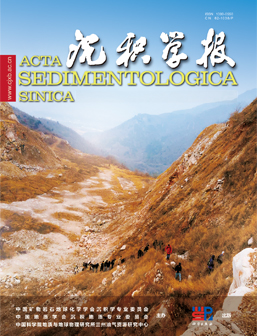Sedimentary characteristics of deep-water gravity flow in Chang 7 Member of Yanchang Formation in Fuxian area, Ordos Basin and its significance for petroleum exploration
doi: 10.14027/j.issn.1000-0550.2024.059
- Received Date: 2024-02-26
- Available Online: 2024-06-17
-
Key words:
- Deep water gravity flow /
- sandy debris flow /
- high quality reservoirs /
- Yanchang Formation /
- Chang 7 member /
- Ordos Basin
Abstract: [ Objective ] The Chang 7 member of Triassic Yanchang Formation in Ordos Basin mainly develops semi-deep lake-deep lake subfacies, and deep-water gravity flow deposits are generally developed. [ Method ] Taking the Chang 7 Member in Fuxian area of the southeastern basin as the research object, based on the fine description results of centimeter-level cores from 13 coring wells, combined with particle size analysis and logging data, the types and characteristics, formation mechanism, distribution law and evolution model of gravity flow deposits in the Chang 7 Member were studied. Combined with oil test and production test data, the control effect of gravity flow on reservoir distribution was analyzed. [ Result ] The results show that the Chang 7 member in Fuxian area mainly develops three types of gravity flow deposits : sliding-slump, sandy debris flow and turbidity flow. The sliding-slump is characterized by the development of roll bedding, crumpled deformation structure, syndepositional stepped small faults and sliding surface, and is dominated by the mixed deposition of sandstone and mudstone. The sandy debris flow develops thick massive sandstone, mudstone tearing debris and mud-encapsulated gravel structure. The thickness of single sand body is between 0.3-3.5 m, and the cumulative thickness can reach more than 10 m. Turbidity flow develops flame structure and Bouma sequence, and incomplete A,B,D and E sections are common. The sand body is small in scale and limited in development. The thickness of single sand body is generally several centimeters to dozens of centimeters. [ Conclusion ] The Chang 7 member is divided into 6 typical logging facies combinations and 11 lithofacies types. The formation mechanism of gravity flow in this area is underwater slope break zone, volcano and earthquake. Along the source direction, the thickening of the stratum reflects the transition of the sedimentary environment from the delta front to the deep lake-semi-deep lake deposit ; vertically, three types of gravity flow overlap, dominated by sandy debris flow. The sandy debris flow in the gravity flow sand body has the best oil content, and the main body is oil spot-oil immersion.
| Citation: | Sedimentary characteristics of deep-water gravity flow in Chang 7 Member of Yanchang Formation in Fuxian area, Ordos Basin and its significance for petroleum exploration[J]. Acta Sedimentologica Sinica. doi: 10.14027/j.issn.1000-0550.2024.059 |






 DownLoad:
DownLoad: